Today, eel is a very popular food and fish not only in Japan but also overseas. Unadon is a traditional Japanese food that uses grilled eel. It is one of Tokyo’s specialty cuisines from the Edo period, and locals usually served this by putting rice in a bowl then sprinkling sauce and putting eel kabayaki on it. If you know about Unajyu then I will let you know about Unadon or Unagi-don.
Etymology
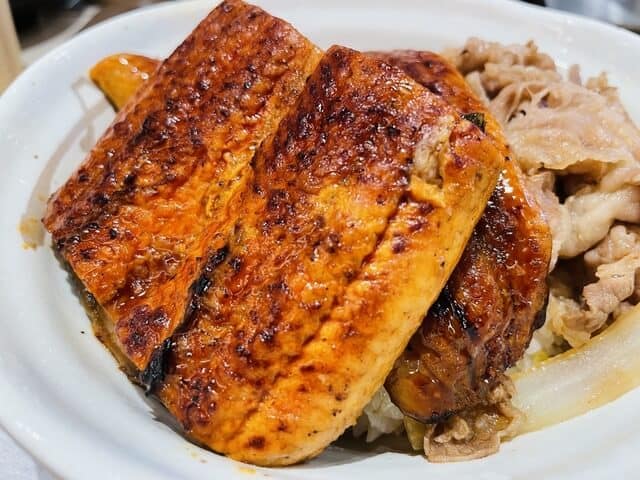
Unadon (うな丼) is an abbreviation for Unagi-don or Unagi donburi, but it is popularly called by Unadon. Unagi (うなぎ) means eel in Japanese and donburi (丼) is “a large helping of rice covered in meat, fish, and/or vegetables, all served in one big bowl”.
What is Unadon?

Unadon (うな丼) or Unagi Donburi (うなぎどんぶり) is a traditional Japanese rice bowl dish in which the Eel kabayaki is on top of white rice. It is one of the local dishes of Edo and Tokyo. It is also known as eel rice (manmeshi or mamushi). Locals make Unagi don or unadon by putting rice in a bowl then sprinkling sauce and putting eel kabayaki on it. Depending on the area, some served the rice from the top to cover the eel. Although it is called “don,” round lacquer bowls are often used instead of ceramics. The sauce is mainly of soy sauce and mirin and many shops used it carefully by adding a little bit. Japanese believed that the fat and flavor of eel, burnt skin, and charcoal are added to create richness and depth and will mature into a taste unique to long-established shops.
History of Unadon

Birth of eel kabayaki
During the Muromachi period in 1399, the Japanese people had already been consuming grilled eels known as kabayaki. The eels were cut into cylindrical shapes and cooked on skewers, a process that was named Kabayaki. As wetlands diminished due to development in the Edo period, many eels began to reside there, leading to a surge in the popularity of eel kabayaki. This marked the period when Kabayaki firmly established itself during the Edo era.
Birth of Unadon
The eel dish known as Unaju is the standard preparation, but Unadon is as popular as Unaju. The popularity of Unadon is due to the Japanese method of steaming it with the heat of Donburi rice, which softens and intensifies the flavour of the eel. The history of Unadon can be traced back to the Edo period, when the food culture of eels became established in earnest. However, there are several reasons why Unadon became the most popular preparation. One hypothesis suggests that in the latter half of the Edo period, a person named Imasuke Okubo, a gold maker from Sakai Town, Nihonbashi, Edo (Tokyo), began selling Unadon in the playhouse.
Prior to the advent of the eel bowl, it was common practice to place the roasted eel between rice and rice to prevent it from cooling and to place it on top of the rice. The preparation was straightforward, and over time, the locals simply placed the eel on top of the rice. In contrast, in Kansai, the eel is not steamed in advance, which prevents it from collapsing. Consequently, the method of sandwiching it between rice has been retained to this day. During the Meiji era, the locals referred to it as Unagidonburi, and shortly after the Japanese abbreviated it to Unadon, the name was established.
Season of unagi
The unagi, or freshwater eel, is a beloved delicacy in Japan, especially during the summer months. Around July, advertisements for unagi start appearing everywhere in Japan due to a special holiday called “Doyo no Ushi no Hi” (the Day of the Ox in Midsummer). This is because the fishing season for unagi seeds (glass eels) in the nine major aquaculture prefectures is typically limited to the winter months.
Unadon Recipe
Unagi is often grilled and served in various styles, such as unaju (grilled eel served on a bed of rice in a lacquered box), unadon (grilled eel on top of rice in a bowl), hitsumabushi (grilled eel served in a special way, where it is first eaten plain, then with condiments, and finally mixed with hot tea), and unagi nigiri (grilled eel served on top of sushi rice). Here is Recipe of Unadon.
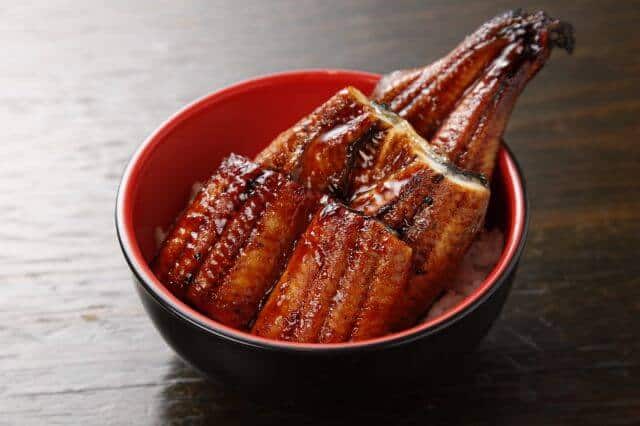
Unadon Ingredients
| Ingredients of Unadon for 1 person | |
| rice | 200g |
| grilled eel | 85g |
| water | 15g |
| cooking sake | 42g |
| soy sauce | 30g |
| sweet sake | 28g |
| sugar | 12g |
| Japanese pepper | 2g |
How to make Unadon
Cut the eel kabayaki in half then put the sauce ingredients which are soy sauce, sweet sake, cooking sake, and sugar in a bowl and mix.
Put the eel and water and cooking sake in a frying pan, cover with medium heat, heat for about 3 minutes until the eel kabayaki is plump, and take it out.
Put the sauce in the same frying pan, heat over medium heat, boil for 1 minute until thickened, and remove from heat.
Serve rice in a bowl, put the unagi on it, and put the Japanese pepper to complete.
How do Japanese price Unagi?
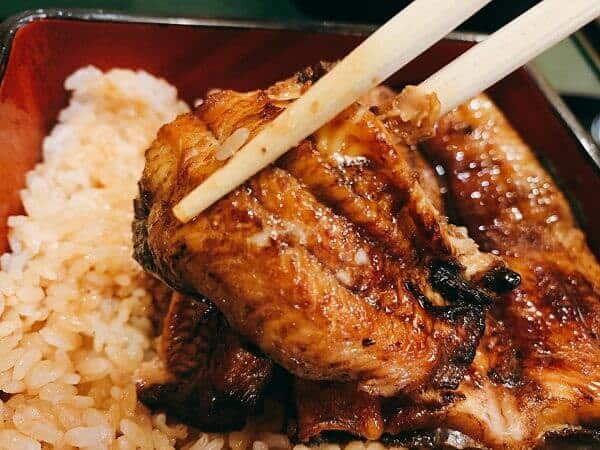
The price of the unagi is divided into three categories.
Size of unagi used
Unagi has three sizes namely, the three-tailed size, four-tailed size, and five-tailed size. The price is set per kg of these three. If it is 5-tailed fish, 1 fish is 200g, 250g for 4 tail size, and 3-tailed fish is around 330g, which is around 330g. The larger the size, the lower the unit price per kg is set.
Types of unagi used
The place of origin of eels is on the label affixed to the unagi pack at supermarkets. In most cases, the price label says “domestic,” “Chinese,” “Taiwan,” “Indonesian,” and so on. In the case of domestic products, the product label says “Kagoshima”, “Tokushima”, “Miyazaki”, “Shizuoka”, “Lake Hamana” etc. The price is a way of distinguishing that everyone knows. Naturally, domestic products are expensive. Chinese products are about half the price of domestic products. Most of the eels offered at the shop for around 2000円 are farmed eels. Natural unagi has a yellow tummy and a thin body. The texture when one eats it after baking is firmer and lighter. While the cultured-unagi has a white tummy and large body. The eel is characterized by low fat and no odor.
Based on the restaurants pricing
There are franchisee stores and high-end restaurants that sell unagi. However, the restaurant uses different unagi and franchisee power to cost down. One example of a franchisee is the Unatoto that has Unadon for only 550円 and twice the size of that called “Unadon Double” cost only 1,000円. Another cheap franchisee is the well-known Yoshinoya. They serve the lowest price Unadon here for 788円 per serving (866円 including tax), 1,218円 for two (1,339円 including tax) and 1,648円 for three servings (1,812円 including tax). While the high-end restaurants in Japan serve their Unadon for 3,200円, Eel kabayaki, and Eel Shiroyaki for 2,800円. Their unadon comes with steamed eggs, pickles, and liver soup.
Types of Unagi
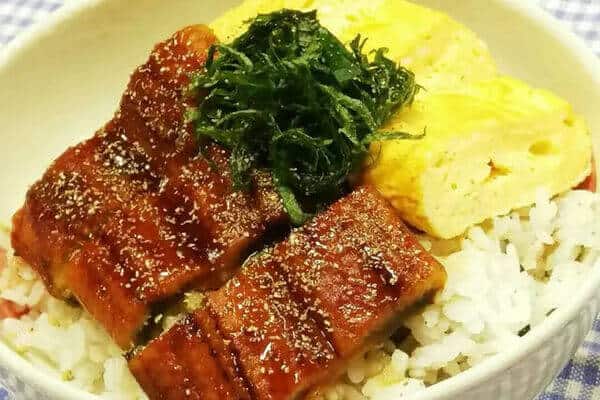
Japanese eel
It is an elongated cylinder and the eyes are small and there is no belly fin. A dark brown back with a back fin that connects to the tail. It has a pale yellowish-white belly. Compared to the thick and short eels in Europe, the Japanese eel has an elongated impression. Due to overfishing, the natural Japanese eel is now an endangered species, and various efforts locals made to conserve the species.
European eel
It is the only eel distributed in Europe. After the war, it was imported into Japan in large quantities and cultivated. The appearance is almost the same as the Japanese eel, and it has an elongated cylindrical body. The taste is almost the same, but it tends to be more greasy than Japanese eels.
Most of the eels distributed in Japan are Japanese eels and European eels.
Giant mottled eel
The eels distributed in Japan are the Japanese eel and this giant mottled eel. As the name suggests, it is larger than an eel and can reach a maximum length of 2m and a weight of 20kg. However, unlike Japanese eels, the number of eels that locals catch is small and the taste is inferior, so they do not generally distribute it for food.
Natural eels and farmed eels
Natural eels are rarely found on the market as they are. However, aquaculture is not a “complete aquaculture” that grows from eggs, but a “livestock-type” farmed eel that catches and raises young and adult fish.
What is the best season of Unagi?

Unagi is served year-round; however, it is especially popular during the summer months due to properties thought to increase stamina and heat tolerance. However, it seems that the Japanese eat eels often even in winter. In a local magazine, it says that the Japanese also eat the eels or unagi on the day of the Ox in both cold and hot weather. And it is clear that eels are not limited to summer ones.
Unaju vs Unadon
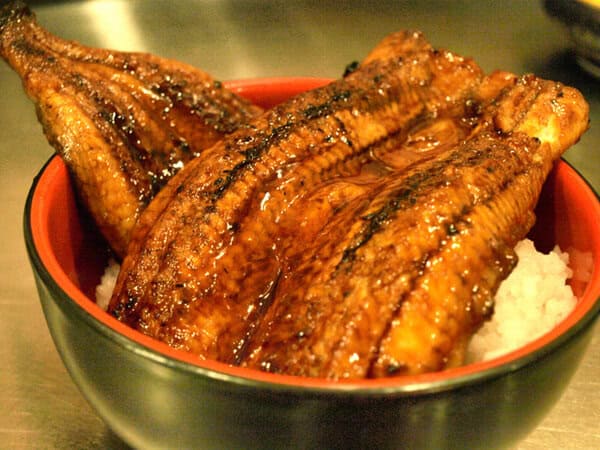
Japanese often serve Unagi Kabayaki over rice. The grilled eel topping itself is the “Unagi no Kabayaki (鰻の蒲焼)“. There is very little difference between the two. Locals serve the Unadon is in a bowl and serve the Unajyu in a heavy box. You can only tell the difference between the bowl and the box in terms of the quantity of eel present. On average, you can expect to receive 1.5 times more eel in a serving of Unajyu, than in a serving of Unadon. There is no difference in the quality of each.
Both are available as a normal-sized or special-sized portion. Unadon was created in the late Edo period of Japan, while Unajyu was not created until later, during the Meiji period. In Japan, they have introduced the use of the heavy box so that it could be delivered to customers while the meal inside stayed warm. If you put the same amount of eel into the box it looks a little scarce, so the Japanese introduced the larger-sized meal for the box version.
Where to get Unadon in Japan?
Cheap Franchisee
Unatoto

This store wants you to feel free to enjoy the unagi, which has high nutritional value and has been familiar to Japanese people for a long time, at a much lower price. The rice used for Unadon is carefully selected from the rice shops nationwide that best suits Unadon. It is rice with an exquisite balance that increases the deliciousness entwined with the sauce that rice professionals created.
Yoshinoya
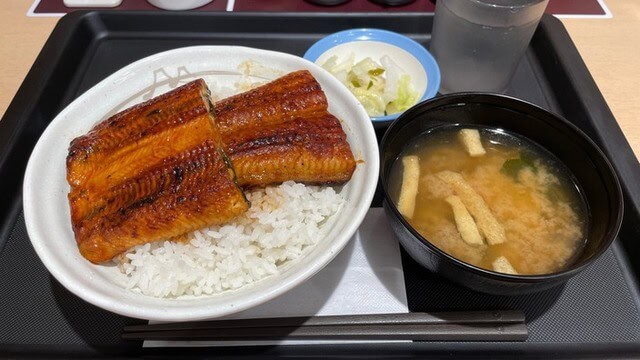
Yoshinoya is a Japanese multinational fast-food chain and the second-largest chain of gyūdon (beef bowl) restaurants. The chain was established in Japan in 1899. They serve the lowest price Unadon here for 788円 per serving (866円 including tax), 1,218円 for two (1,339 yen including tax) and 1,648円 for three servings (1,812円 including tax).
Restaurants that sells Unadon
Tsukiji Unagi Shokudo (築地うなぎ食堂)
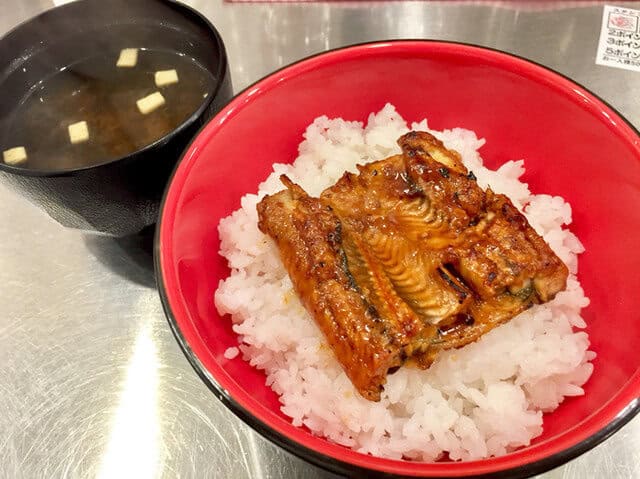
The menu includes Unadon and Tsukiji Unagimeshi which the shop limits to 20 meals. There is also a mega eel bowl that the shop filled with eel. This store is featured on TV and became a bit of a topic. In addition, the skewer-based menu such as eel skewers, headed shrimp skewers, and scallop skewers are also part of those menus they serve.
Unasho (うな正)
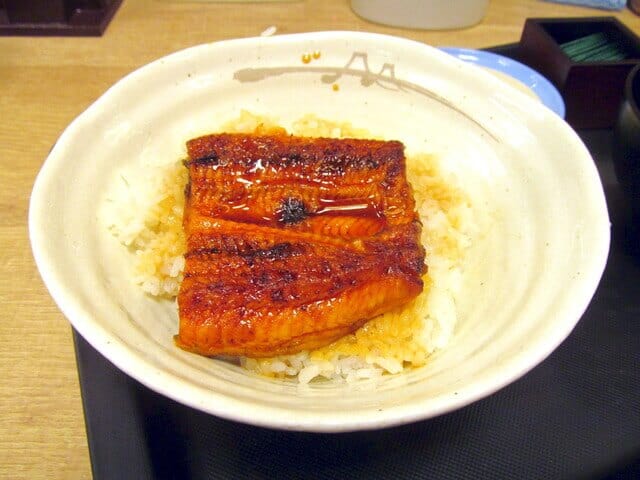
The Unadon in this shop cost only 980円. It comes with new incense and soup. There aren’t many shops where you can eat such a solid eel for less than 1000円. Furthermore, it is surprising because they make it domestically produced. It is not uncommon for people to line up that much.
Unafuji (うな富士)
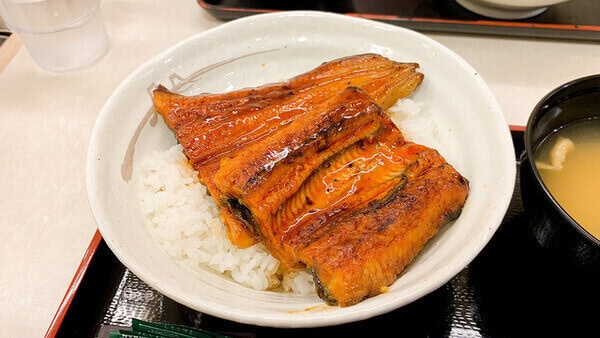
“Unafuji” is a well-known store where you can enjoy the No. 1 eel in Nagoya, and you can line up before the store opens. The fluffy, soft and high-quality eel is characterized by its soft skin, even though it is crispy.
Ogiya (鰻 木屋)
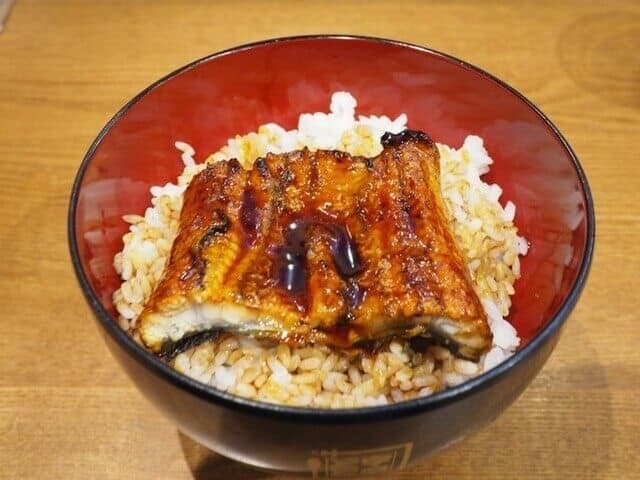
A long-established eel restaurant founded in the late Edo period. Many customers characterized the sauce by its rich sweetness of tamari soy sauce. The store owner added this since its establishment. Many fans come in search of a taste that makes you feel the history. The shop is also particular about rice, so they buy it with brown rice and cooks it.
Final Thoughts
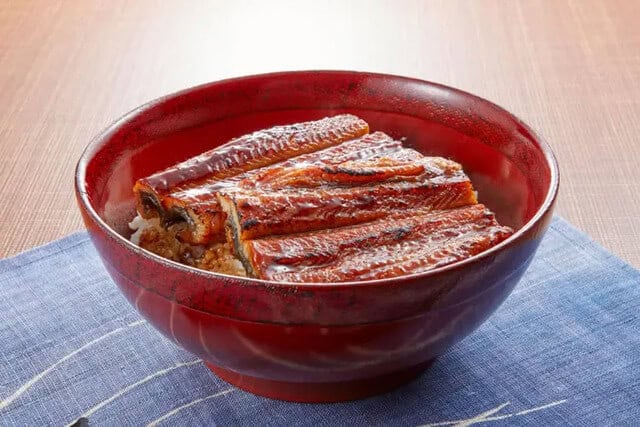
When people talk about Japan, unagi (eel) usually pops into people’s minds. Like sushi, Japan is very famous for its unagi, and usually, the image we have is a tender slice of eel with sweet sauce over a bowl of Japanese rice. However, Tokyo seems to have taken the simple unagi dish to a whole new level. There are other unagi dishes in Japan such as Unajyu and Hitsumabushi.



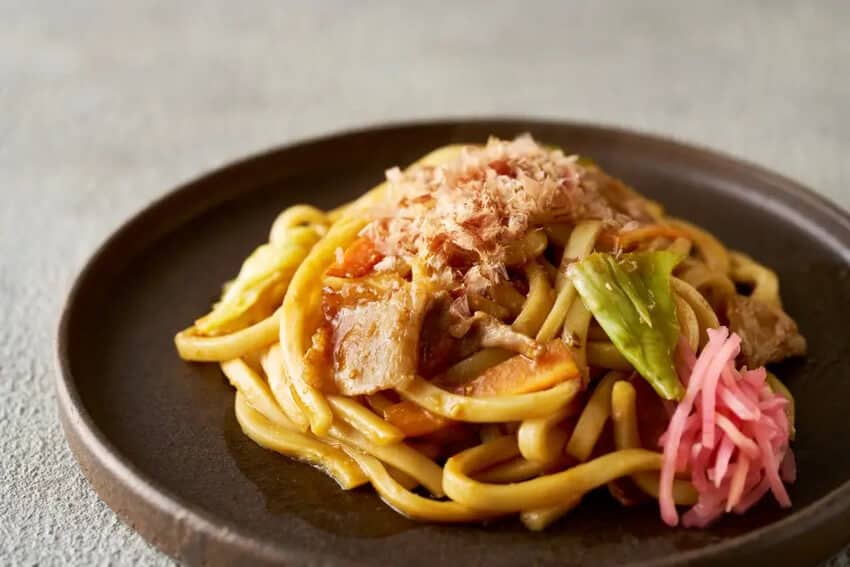
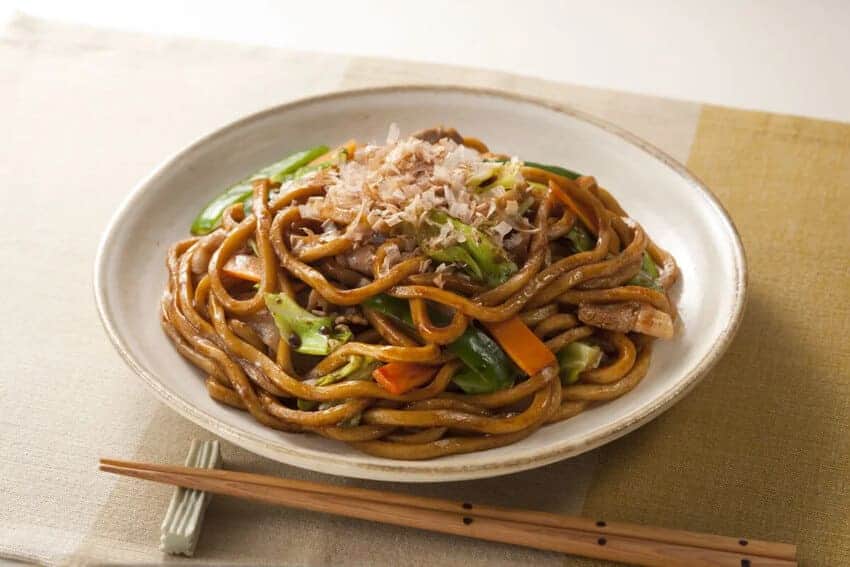

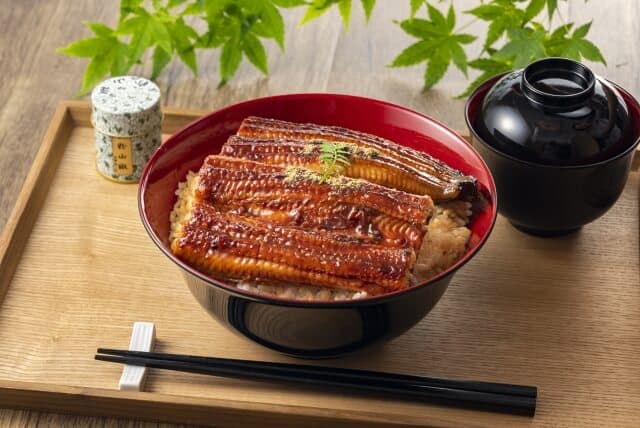
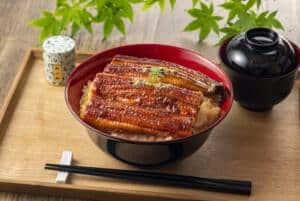
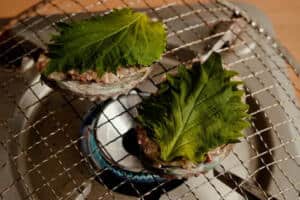
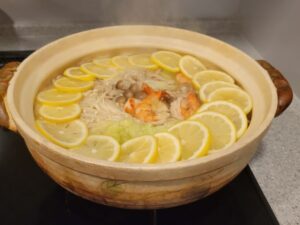
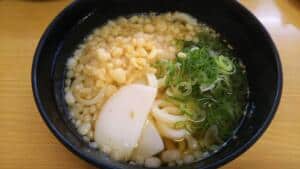
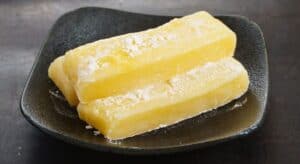
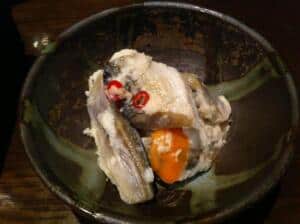
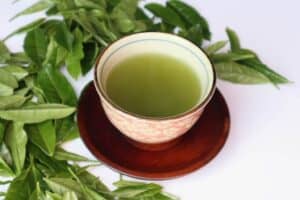
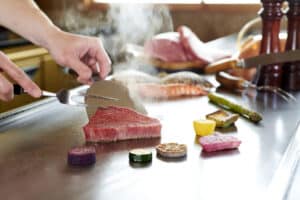
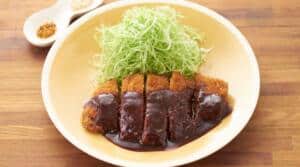
Comments